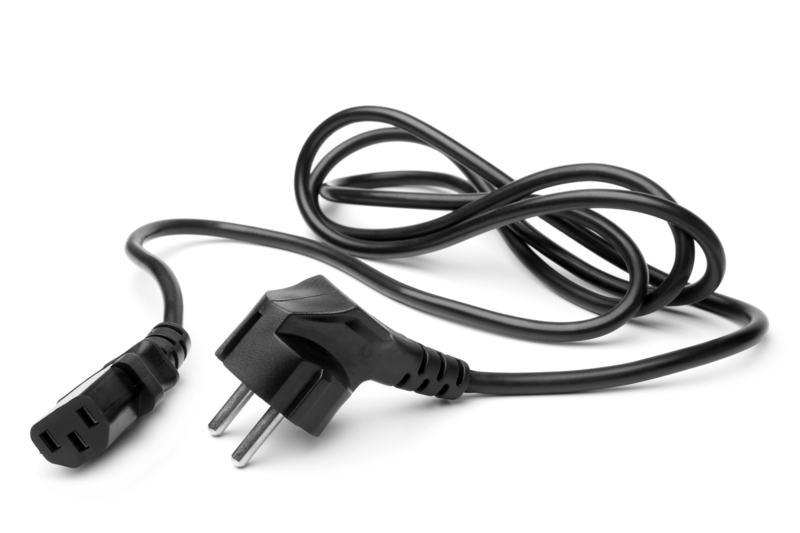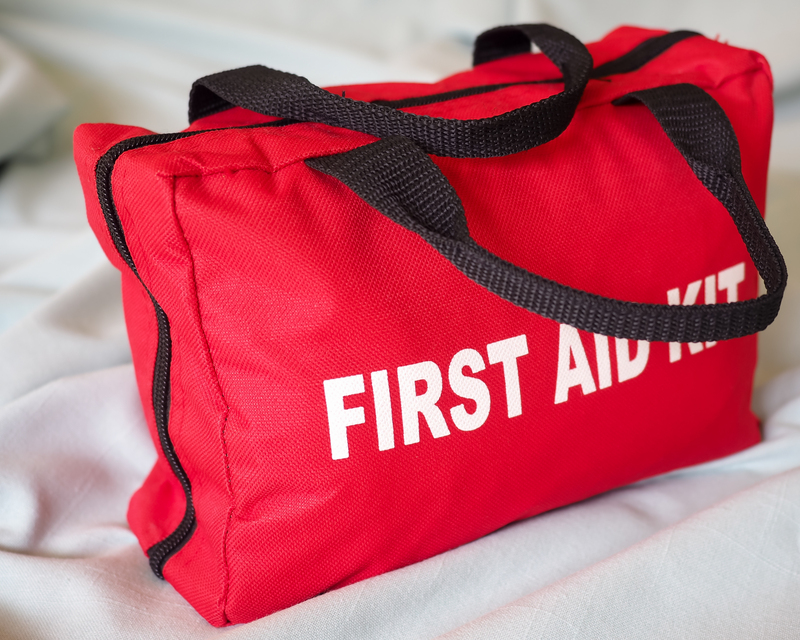Guide to Storing a Freezer Safely When Idle
Posted on 07/06/2025
Comprehensive Guide to Storing a Freezer Safely When Idle
Storing your freezer safely when it is not in use is crucial to prolonging its life and preventing potential issues such as mold, electrical hazards, or unpleasant odors. Whether you're moving, renovating, or simply don't need your freezer for a period of time, following proper procedures ensures your appliance stays in optimal condition. This comprehensive guide to storing a freezer safely when idle will highlight everything you need to know--covering cleaning, preparing, storing, and reusing your freezer after storage.
Why Store a Freezer Properly When Not in Use?
Many people overlook the importance of correct idle freezer storage. Improper methods can lead to:
- Mold and mildew growth due to trapped moisture
- Unpleasant odors that are difficult to remove
- Electrical and mechanical damage if moisture, pests, or debris invade the unit
- Damage to seals, gaskets, and components from incorrect positioning or storage conditions
Properly storing a freezer when not in use prevents all these problems, ensuring your appliance is ready for operation when needed.

Step-by-Step Guide to Storing a Freezer Safely When Idle
Step 1: Empty the Freezer Completely
Before putting your freezer into storage, it's essential to remove all items. This ensures no food spoils, leaks, or attracts pests.
- Switch off the freezer and unplug it from the wall.
- Transfer all food to another freezer or dispose of perishable goods.
- Remove shelves, drawers, and trays if possible for separate cleaning.
Step 2: Defrost the Freezer Thoroughly
Defrosting your freezer is critical in preventing water damage and mold during storage. Here's how to do it efficiently:
- Prop the door open and allow the ice to melt naturally. Place towels on the floor to soak up melting water.
- Never use sharp tools or hairdryers. If you need to speed up the process, place bowls of hot water inside the freezer with the appliance unplugged.
Patience is key for thorough defrosting.
Step 3: Clean and Deodorize the Interior
Once defrosted, cleaning is the next vital step for storing a freezer safely:
- Use a mild solution of baking soda (1 tablespoon per quart of warm water) or vinegar mixed with water.
- Wipe down all internal surfaces, including walls, shelves, and gaskets.
- Remove any spots of mold or leftover residue.
- Dry all surfaces with a clean towel--moisture is an enemy!
For extra odor protection, leave an open box of baking soda or a few pieces of activated charcoal inside the empty unit during storage.
Step 4: Clean and Dry Exterior Components
Don't forget the freezer's exterior. Wipe it down, check for dirt and debris, and pay special attention to the gasket (door seal) by cleaning and drying it. Inspect for any cracks or damage. A well-cared-for seal ensures a great performance post storage.
Step 5: Store Shelves and Accessories Separately
Storing freezer shelves, drawers, and trays separately (wrapped in a clean towel or bubble wrap) prevents damage or warping. Keep all loose components together to avoid misplacement.
Step 6: Properly Position and Secure the Appliance
- Keep the door ajar. To prevent mold and odors, never close the door tightly during storage. Instead, keep it slightly open using a rolled-up towel, cardboard wedge, or special appliance door stops.
- Upright vs. Laying Down: Always store a freezer upright. Laying it on its side can cause refrigerant oil to flow into the cooling lines, potentially damaging the compressor.
Step 7: Select a Safe and Suitable Storage Space
Where you store your freezer matters. The ideal storage location is:
- Dry: Moisture or humidity can create mold, rust, and electrical issues.
- Cool and Sheltered: Avoid direct sunlight, extreme cold, or excessive heat.
- Rodent- and insect-free: Pests can gnaw on wires, gaskets, and insulation.
- On a stable surface: Avoid uneven floors, as they can cause damage or make the appliance unstable.
For garages and outbuildings, consider a freezer cover or dust sheet to further protect the appliance from dirt and pests, but ensure air can still circulate inside.
Step 8: Protect From Pests and Dust
Seal any openings around the storage area and avoid keeping freezers in direct contact with soil or grass. Place the unit on a pallet to keep it elevated and prevent moisture or bugs from entering.
Step 9: Periodically Check the Freezer
If your idle freezer will be in storage for more than a month, inspect it every few weeks:
- Check for accumulating moisture or mold.
- Ensure that the door remains slightly open.
- Look for signs of pests or damage.
Step 10: Precautions for Returning a Freezer to Use
When you're ready to use your freezer again:
- Wipe the interior with baking soda solution and dry thoroughly.
- Reinstall all removed shelves and accessories.
- Plug in the freezer and allow it to reach optimal temperature before adding any food.
- Check that the seal is intact and no odd odors linger.
Additional Tips and Best Practices for Storing Your Freezer Safely
Should You Store a Freezer Plugged In or Unplugged?
Always store a freezer unplugged when not in use. Leaving it plugged in while empty wastes electricity and may cause premature wear.
How to Prevent Rust in a Freezer During Storage
- Ensure all surfaces are completely dry before storing.
- If storing in a humid area, place silica gel packs inside to absorb moisture.
- Do not store the appliance in areas prone to flooding, leaks, or condensation.
Dealing with Extended Storage Periods
If you plan to store your freezer for more than 6 months:
- Consider lubricating the gasket with a light layer of petroleum jelly to prevent it from drying out and cracking.
- Check the manual for specific recommendations from the manufacturer.
Moving and Storing a Freezer Between Locations
If transporting your freezer before storing:
- Secure doors with tape or a strap (without sealing tightly). Use foam blockers or cardboard to keep the door ajar during transit and storage.
- Use blankets or padding to avoid scratches and dents.
- Move upright and allow the appliance to rest for 24 hours upright after moving before plugging it in again. This ensures refrigerant settles suitably.
Troubleshooting Common Problems With Idle Freezers
Mold or Mildew Smell When Retrieving the Freezer
This is common if a freezer is closed too tightly or wasn't dried thoroughly before storage. Scrub all affected areas with a mix of water and vinegar, rinse, and dry. Leaving baking soda inside for 24 hours can neutralize odors.
Frost or Ice Build-Up After Storage
Frost generally occurs if moisture was left inside or the freezer wasn't defrosted properly. Defrost again before using and check that seals are intact.
Pest Intrusion
If you find signs of pests (droppings, chewed wires), remove and clean all parts thoroughly. Repair any damage before using, and set traps or repellents around future storage sites.
Electrical or Mechanical Issues
If the freezer won't turn on after storage:
- Check the power cord for signs of wear or rodent damage.
- Ensure the plug and socket are clean and undamaged.
- If issues persist, consult a qualified appliance technician.

Frequently Asked Questions About Freezer Storage
-
Can I store a freezer on its side?
No, you should always store a freezer upright to prevent damage to the compressor and ensure refrigerant oil remains in the right place. -
How do I prop the door open?
Use a rolled towel, wedge of cardboard, or a special appliance door prop to keep airflow moving and prevent musty smells. -
How often should I check on a stored freezer?
Aim for at least every 2-4 weeks, especially in humid environments. -
What is the best thing to leave inside for odor control?
An open box of baking soda or a few activated charcoal briquettes--both absorb lingering odors effectively.
Conclusion: Safe Storage Keeps Your Freezer Ready
_Understanding how to store a freezer safely when idle is a fundamental part of home appliance care._ By following the steps outlined in this guide--from cleaning and defrosting to choosing the right storage environment and ensuring good airflow--you'll maximize the lifespan of your unit and save yourself future hassle.
Make sure you always store a freezer upright, dry, and with the door slightly open. These simple rules will keep even long-idle freezers fresh, safe, and ready for your frozen goods whenever you need them.
If you have just acquired a new freezer or plan an extended period of non-use, refer back to our all-in-one guide for storing your freezer safely to ensure your investment stays in top-notch condition!
For more home appliance care tips, check out our related articles on appliance storage, cleaning, and maintenance.

_result.jpg)
_result.jpg)




